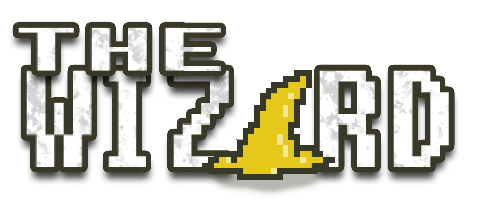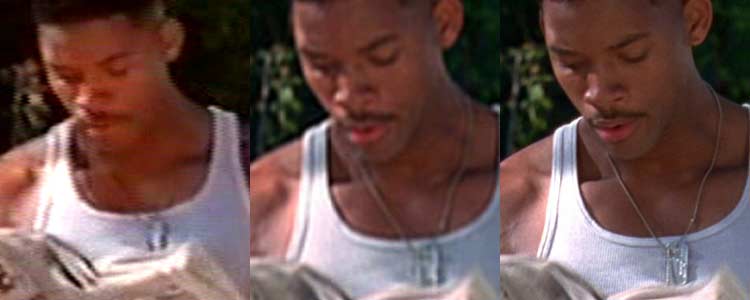Ever wonder how to achieve that 'retro' look in your film and animation? Here is a video I put together that shows the end product of a process that is explained thoroughly in this blog post! Hold on to your gellies and He-Man action figures - here goes!
As some of you may know, I
enjoy the old and vintage, and tend to integrate it with my style of
work; from my writings, storytelling and technology.
Currently I am working on a
side project, an animated film codenamed 'J2', which takes place in a
1984 dystopia and I wanted to give the animation a vintage quality in
not only its art style and story but also the way it is actually
perceived on screen.
You may be wondering,
“Wizard, what are you talking about?” What I mean simply is how
the video will be processed.
In our modern world, we have
our computers which can do just about anything, from creating films,
to typing reports, heck they've even have them installed in our
urinals to play urinating games (Thank you SEGA).
That being said, if we think
about the animation pipeline of today, from inception to the final
cut and render, the modern day animation is mostly created on a
computer now, and so visually (without the use of filters and
effects) they all generally tend to look the same, because a computer
is digital, a pixel is a pixel. Now this is not to be confused with
the actual animation itself, it's more-or-less the media it was
created in.
Let me explain...
Take a look at this example
below:
On the far left is VHS, a
medium long gone and deprecated, however it does have a unique look
to it compared to the other two examples. Note the strange
saturation levels, the over exposed brights and that strange
horizontal line that's running through Will Smith. That line you see
is an NTSC signal line. Back in the day, images were not created on
a screen all at once. At 60Hz (that's 60 times a second!) an image
was created in two fields, an odd field and an even field, this made
those big, heavy, monsterous television sets broadcast signal a
little easier.
Now we move onto the digital
age, the DVD. The center image in the set of three is a DVD, it has
a little more detail, it lost some of the saturation, and lost the
NTSC scanline.
Move onto the far right,
that's Blu-Ray, nice, clean, high definition, I can even see Will
Smith's nose hairs.
The film in the above
example was Independence Day (ID4 as it was advertised all over the
place). It was shot on 35mm film using Panavision and then
processed.
Now you're probably still
wondering what I mean by this processing technique I keep babbling on
about, “Wizard! My hotdogs are getting cold, what's this video
processing?!” Well hold onto your hotdogs, I'm about to tell you.
What productions do, is they
will take their film that they shoot and then bring it into an
electronic medium, the process is called 'Telecining' which is the
process of scanning each individual frame of film into a video
medium, like VHS, DVD or Blu-Ray! On one of these machines:
Now
these large machines take in the film, back light it so that it can
be seen and then scanned in using a digital image sensor called a
'CCD' (charged coupled device) sensor. These CCD sensors are little
wafers that are sensitive to light, they look a little like this:
This process is how it is
done in modern day examples if the production is still shot on film
(as there is a slow migration to only shoot on video), so in the Will
Smith example from earlier, this would constitute all three examples,
from VHS, DVD and Blu-Ray, but what about earlier than 1990s?
Well the CCD sensor didn't
exist in the early 70's or 80's but we definitely had television, we
had films, so that means we had video, and thus the film that they
shot on had to be processed, but how!
Here's an excellent example
from 'Girls Just Want to Have Fun' (
don't ask why I chose this):
The film was released in
1985 which makes it a good visual candidate for the J2 video
processing.
Let's take a look at the
left, notice how the image is saturated as well as much higher in
contrast, the details are lower as well compared to the DVD
counterpart on the right. This film was shot using 35mm film and
went through the telecine process in 1985 as well as again with its
re-release in the early 2000's.
Here's the difference and
why they had to telecine again...
The image on the left was
telecined not using a CCD and a nice, happy, modern-day machine, but
an older, more crude device using vacuum tubes!
These vacuum tubes, or also
known as: 'Vidicon', 'Havicon', 'Newvicon', or 'Saticon' tubes work
like our old TV sets, a big, glass tube, shooting a beam of electrons
through it to produce an image! But in this case, we're going the
opposite direction and instead of displaying an image, we're
'absorbing' an image. These video tubes were the precursors to the
CCD and the CMOS (the sensors on your phones and modern camcorders /
cameras).
Here's what the tube looked
like:
And a less science-y image
of what they actually looked like:
Pretty scary looking, right?
It looks like I could trap a ghost or two with it.
Well these strange looking
tubes innovated live broadcast and the home television. They made it
possible to convert what it saw into electrical signal, and thus a TV
set, unlike film which needed a projector to see.
These camera tubes were very
unique, they acted like the human eye in many respects, it had a
memory in it. For example, ever had your photo taken by a friend
with the flash on? You get that really weird blob in your eye that
doesn't seem to go away for minutes? These camera tubes do the same
thing! If you flash light on it, it has the exact same effect:
These tubes, unlike modern
image sensors, act very differently to light and color (as you can
see from the image above), they tend to be more saturated with
certain colors, have more contrast by nature and other strange
oddities, such as color shifts and hues, which going back to the J2
animated production, could serve a great, artistic purpose!
With all of this history and
build up, this was the effect I wanted to achieve in processing the
J2 animated film. There are a lot of people out there emulating that
'VHS look' or than antiquated film look, but it's all emulation, and
emulation by definition is fake, or 'almost like'. For J2, I
wouldn't want to settle for fake, or emulated. It's like having
margarine instead of butter for cooking! It just isn't the same!
So I went on this hunt a
long while back, I studied it, I analyzed where these formats came
from and why and this is why I am writing this blog post now to share
my results...
Through the years I picked
up a few of these antiquated tube driven machines in the form of
camcorders and video cameras to understand how they worked.
Once I understood how these
tube cameras worked and how I could get the most out of them (after
calibration), I decided to take the next step and understand the
telecine process and how I could pick up a telecine machine.
Well, let's just say I
couldn't pick one up, they're nearly impossible to find and if I do
find one, they're so expensive I'd be living out of a box to pay for
it for 30 years.
So I decided to craft my own
retro telecine machine. I retrofitted an old tube camera with a
telecine home converter box from Ambico and a small LCD monitor on
the receiving end.
Here is a wonderful piece of
artwork that I spent a whole minute on to explain the idea...
(I
will be signing autographs all week, hold your swooning).
My goal with this project
was to convert digital video into older analog, then take the older
analog back to digital again. This cyclical process would
essentially “de-modernize” digital video to make it look more
antiquated.
Here is an image of the
final setup:
In conclusion, I would have
to say that this was a very successful first run, albeit that there
are a few things that still need to be worked out to really achieve
that vintage look for retro video processing, but I would say it's
definitely going the right direction. Hopefully once the animation
is done, the final render can then be telecined using this process
and not emulated using editor filters or After Effects.








.jpg)










